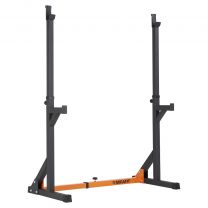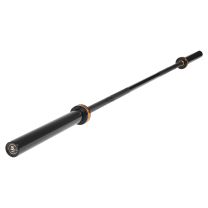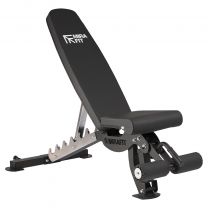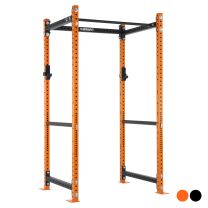How To Spot Correctly At The Gym
How To Spot Correctly At The Gym

It's easy to mistake spotting as something you do to help your training partner rack the bar or get the correct form.
But it's actually so much more.
The thing is, training on your own is all well and good until something goes wrong. And you won't know how serious the outcome, until it happens.
Spotting isn't there instead of safety bars. Spotting is about helping you avoid potentially life-threatening situations. We all need to push ourselves beyond our limits to improve.
However, reaching that point of muscular failure means your neuromuscular system can no longer produce enough force to overcome a particular weight load. But, when you're training to improve your strength and build muscle, you have to get to this point to progress.
So, unless you know how to fail properly, spotting isn't an option - it's a necessity. Especially when training with heavier weight loads.
It doesn't matter whether you're at the Squat Rack, Bench Press or Power Cage, you should always train with someone who knows how to spot. Read on to find out how to spot correctly.
HOW TO SPOT
Spotting technique varies depending on what you're doing. And of course, the amount of guidance and support needed varies from person to person.
The key thing is to communicate and make sure you ask the person what they need from you, so that you can get it right.
Before you get started, ask your lifter:
• How much guidance they want from you – too little guidance and you put the person at risk of injury. Too much, and you'll be cheating them out of their hard work.
• How many reps they're planning on doing – this is important for knowing when to expect their point of failure. If they're doing one-rep max, then you'll need to be extra vigilant from the moment they unrack the bar.
We've split out the key points for the main exercises below:
SQUATS
• Arm position – place your arms just underneath their armpit
• Leg position – take a wider stance so you can squat down directly behind them without obstructing their movement
• Following the bar – when the lifter has started squatting, the spotter's hand should be following the squatter but not touching them. The spotter needs to be primed and ready to lift from underneath the armpits to help the squatter up if they fail
• Safety spotters – having safety spotters as a back up is a good idea. Especially if they find they can't get back to a standing position. This way they can bail without being injured
BENCH PRESS
• Hand position – adopt an alternating grip keeping your hands approximately shoulder width apart. Remember not to grab the bar or obstruct the lifter
• Lift off – assist the lifter in taking the bar off the bar rests and placing it over their chest. This helps place the bar in a better position for the lifter and reduces potential shoulder strain, leaving them with more energy to lift
• Checking in – ask your lifter if they're ok and have got the bar in a secure position
• Following the bar – when the lifter has started pressing, the spotter's hand should be following the bar but not touching it
• Re-racking the bar – at the end of the set, ask if they need help racking the bar
SEATED SHOULDER PRESS
• Weight placement – you may need to help your lifter get in position before they start. Check to see if they need your assistance in lifting the dumbbells into a shoulder press position
• Hand position – ask if they lifter wants you to support their wrists or elbows. If they require support at their elbows, place the middle of your palms underneath their elbow. This way, the spotter will be able to push up the lifter starts to struggle. If they need support around their wrists, cuff your hands close to their forearms so you can step in if they need help
• Leg position – if your lifter is shoulder pressing, adopt a wider stance to ensure you're stable
• Follow them – allow your lifter to take the lead and then follow them closely without touching them unless they specifically ask for it. Maintain a small gap of around 2cm. This means if they fail, you can jump in and assist
The most important thing to do is communicate with your lifter so you both know what to expect. And as a final few pieces of advice, here's what not to do:
• Do something the lifter didn't ask you to do – unless they're about to injure themselves. They will probably appreciate the spotter saving them in the long run
• Get distracted from spotting. You want to make sure that the lifter isn't struggling and you are there to help them
• Assist on every rep unless they ask for it. This is cheating the lifter out of their reps
For more content, follow us on Instagram, YouTube, TikTok, and on our official Mirafit Facebook page.
Enter your email to signup to our newsletter
Tags: Exercise Type > Strength







